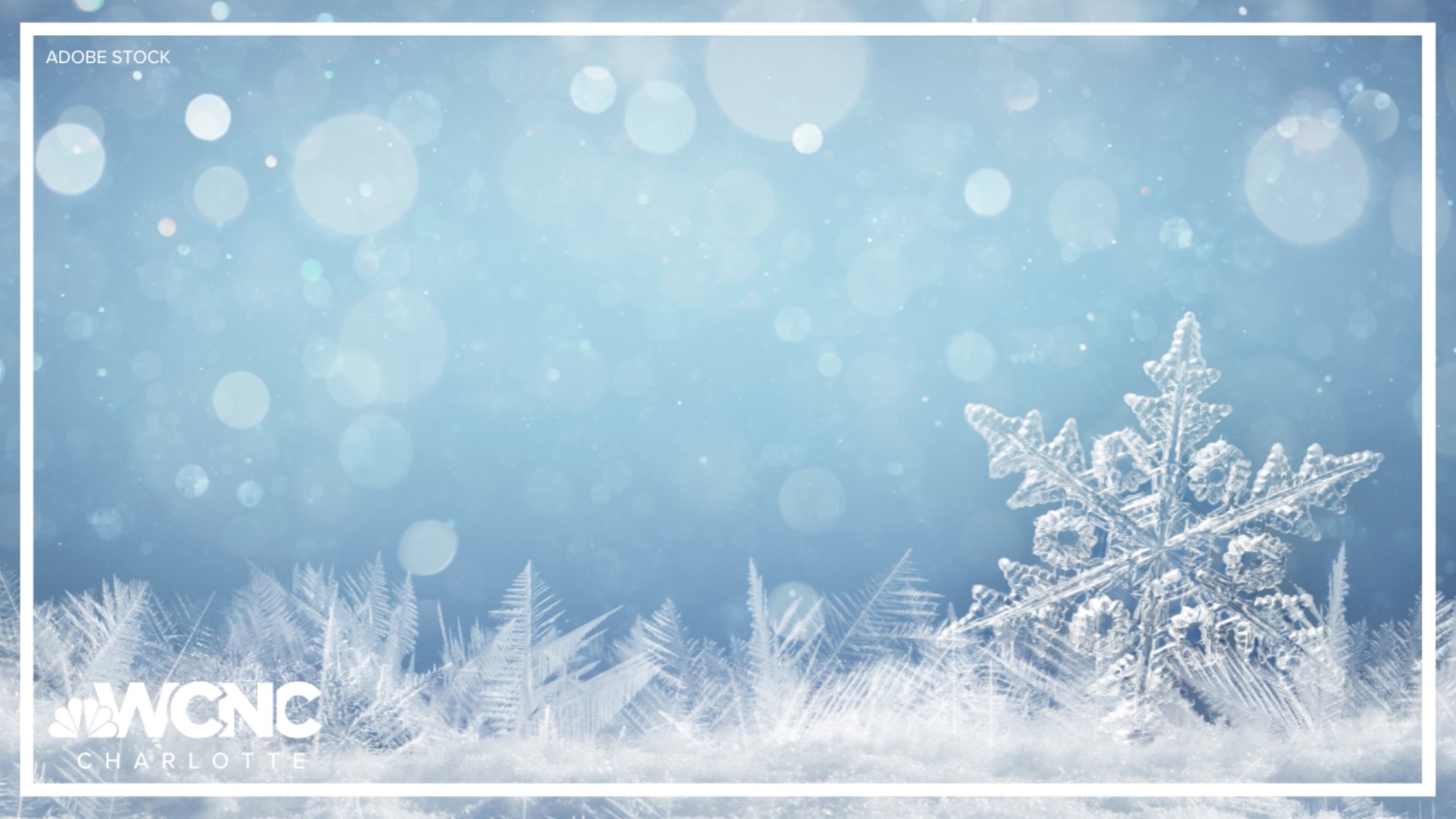CHARLOTTE, N.C. — Snow has been rare in the Charlotte area lately. In fact, last winter was the first time in Charlotte history that the Queen City didn't even have a trace of snow.
So while we wait for the next potential snowfall, let's explain how snowflakes form.
When you think of snow, you might think of a winter wonderland with tons of powder on the ground. But when you zoom in on the falling flakes, their intricate beauty is one of the coolest things in nature.
You've probably heard that no two snowflakes are identical. While this is true, snowflakes can still look similar. It's their different branches and designs that make each one unique.
The process that forms snowflakes is complicated, so let's start with square one. Or in this case, hexagon one.
A snowflake starts as a small particle (such as a speck of dust) where water vapor condenses onto it. As we know, a water molecule has two hydrogen atoms and one oxygen atom. These hydrogen atoms link together, crystalize and form a hexagonal prism. This is why snowflakes most commonly have six sides.
From here, branches can form from the corners of the hexagon, bonding to the second hydrogen atom, and the beginning of a snowflake is born.
But the process isn't finished. This snowflake will continue to rise into colder air in the cloud, gaining more branches and dendrites as more tiny water particles bond to the flake. Once it becomes too heavy, it falls to the ground.
Snowflakes differ from one another because each flake takes a unique path with subtle atmospheric differences. The two primary atmospheric factors are temperature and humidity level; however, temperature is the main contributor to what shapes a snowflake.
When temperatures are warmer, from say 28 degrees to freezing (32 degrees), snowflakes tend to fall as thin hexagon plates. But a higher humidity level can stick together, making larger flakes or even look like a classic snowflake. There are 35 different shapes of snowflakes, such as needles and columns, that fall when temperatures are between 14 and 27 degrees.
Colder temperatures, when it's 10 degrees or less, produce the most popular and intricate snowflakes, known as stellar dendrites. There's another snowflake that is equally as spectacular that forms in this range that's known as the stellar plate.
There are so many other types of snowflakes that each have their own story, like rimed crystals, capped columns and triangular crystals, but we'll save that for another time!
Contact Chris Mulcahy at cmulcahy@wcnc.com and follow him on Facebook, X, Instagram and TikTok.
WCNC Charlotte’s Weather IQ YouTube channel gives detailed explainers from the WCNC Charlotte meteorologists to help you learn and understand weather, climate and science. Watch previous stories where you can raise your Weather IQ in the YouTube playlist below and subscribe to get updated when new videos are uploaded.

